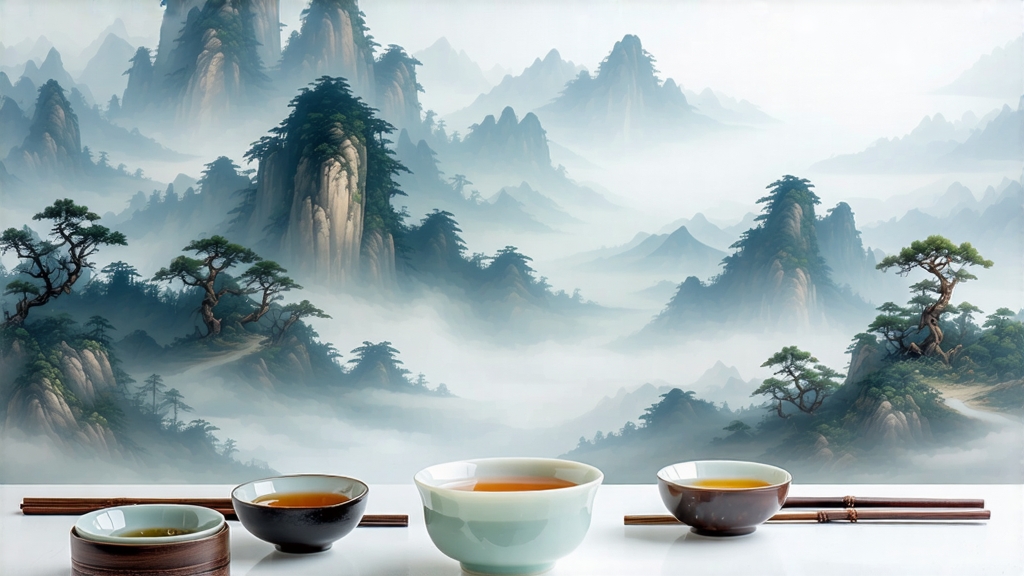
If green tea is China’s fresh-faced poet and pu-erh its venerable historian, then Phoenix Dancong (Fenghuang Dancong) is the perfumed troubadour of the oolong world. Born on the vertiginous granite ridges of Phoenix Mountain in northern Guangdong, this leaf has been seducing tea caravans since the Song dynasty, when imperial scholars first christened it “Song Zhong” in homage to the 700-year-old mother tree still alive today. Over centuries, isolated valleys, sea-born mists, and a kaleidoscope of local cultivars conspired to create what Chinese tea scientists now recognize as the richest aromatic gene bank within Camellia sinensis var. sinensis. More than eighty distinct “fragrance types” have been catalogued—gardenia, almond, ginger flower, bitter orange, even pomelo skin—yet all are collectively sold under the poetic umbrella “Dancong,” literally “single bush,” a reminder that great tea once came from one tree, one family, one afternoon’s pick.
From Bush to Cup: the Craft
Phoenix Dancong is not a single cultivar but a terroir-defined clan. Growers identify each tree by its natural aroma, then propagate it vegetatively, giving rise to names like “Mi Lan Xiang” (honey-orchid), “Zhi Lan Xiang” (gardenia), and “Ya Shi Xiang” (duck-shit—farmers coined the vulgar name to scare thieves). Harvest begins at dawn in late April when two leaves and a bud are still cool from mountain mist. The pluck is spread on bamboo trays and withered under gentle sun for twenty minutes, just long enough to soften cell walls. Indoors, trays rest on rafters while electric fans mimic the cool valley breeze; this “green-making” phase lasts six hours, during which leaf edges redden and enzymes release floral precursors.
Next comes the most athletic step: yaoqing, or “rocking-green.” Workers toss 3–4 kg of leaves into a round bamboo drum, rhythmically rolling and shaking it for eight minutes, pause, repeat—up to five cycles across four hours. The mechanical bruising coaxes partial oxidation (30–40 %) and fuses leaf juices with air, birthing the signature honey-peach note. Oxidation is arrested in a 230 °C wok for three minutes, just long enough to fix color without baking fragrance. After a quick break-up and screening, the leaf is wrapped in cloth “tofu bundles” and rolled under foot-powered boards, twisting it into dark, iron-wire strips.
The final act is fire. Unlike Anxi or Taiwan oolongs that prefer low-temperature baking, Dancong embraces a marathon charcoal finish. A sunken brick oven is piled with longan-wood embers whose steady 80 °C heat perfumes the tea for up to thirty hours across two months. Masters “sleep with the fire,” waking every forty minutes to shift ash and sniff for the tell-tale shift from grassy to caramel. The result is a leaf that looks almost black yet exhales an alpine bouquet impossible to replicate below 600 m elevation.
Tasting the Mountain
Professional cupping follows a strict 1:15 g/ml ratio, 100 °C water, and a brutal three-second flash infusion to stress-test the leaf. A premium Mi Lan Xiang will deliver three aromatic waves: first, warm honey and ripe mango; second, orchid and wet slate; third, a cooling camphor echo that Chinese tasters call “mountain air back-throat.” The liquor glows like antique amber, its viscosity clinging to the cup wall in “golden legs.” Swirl and sip; the front palate registers brown-rock sugar, mid-palate a hint of pomelo zest, finish a whisper of cinnamon that lingers five minutes. Good Dancong yields eight infusions; great ones twelve, each pivoting the aroma wheel without dropping body.
Gongfu for the Home Brew
You need not own a cliff-side gazebo to enjoy Dancong; a 120 ml gaiwan and calm pulse suffice. Heat the vessel with just-boiled water, then fill one-third with leaf—about 5 g. The first pour, done in four seconds, is discarded as “tea rinse,” a courtesy that awakens hibernating aromatics. Subsequent steeps start at five